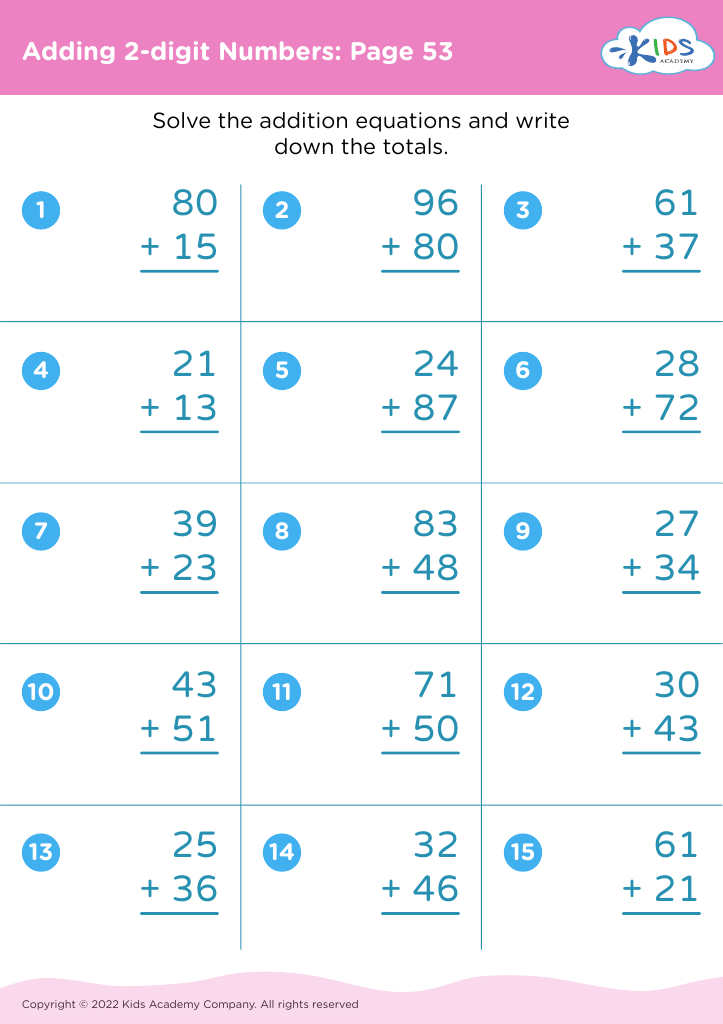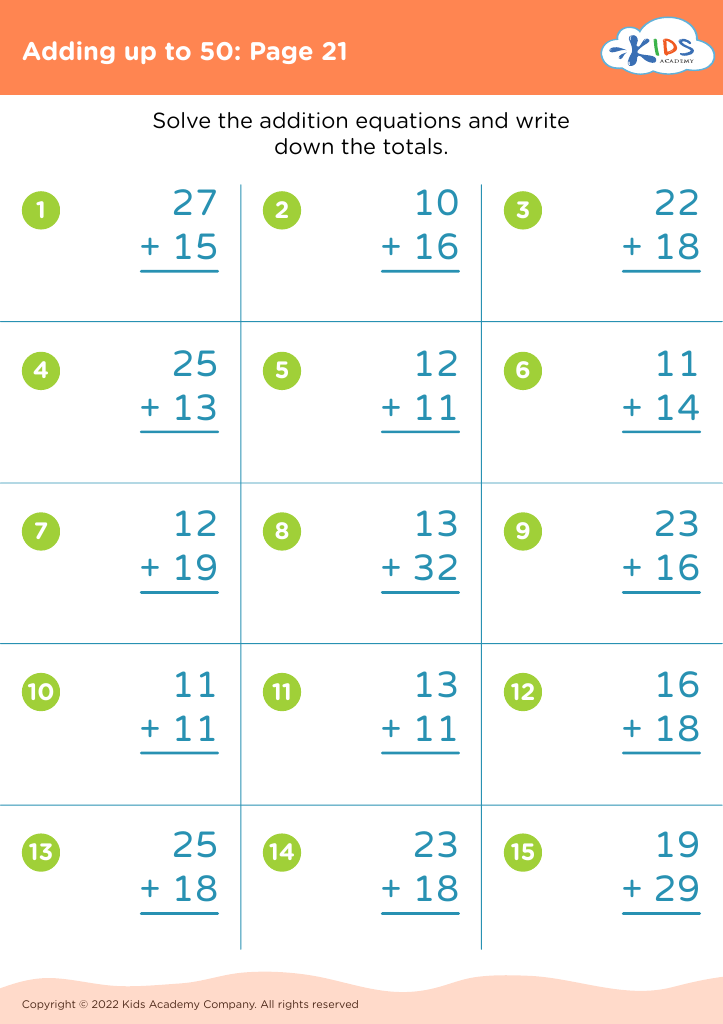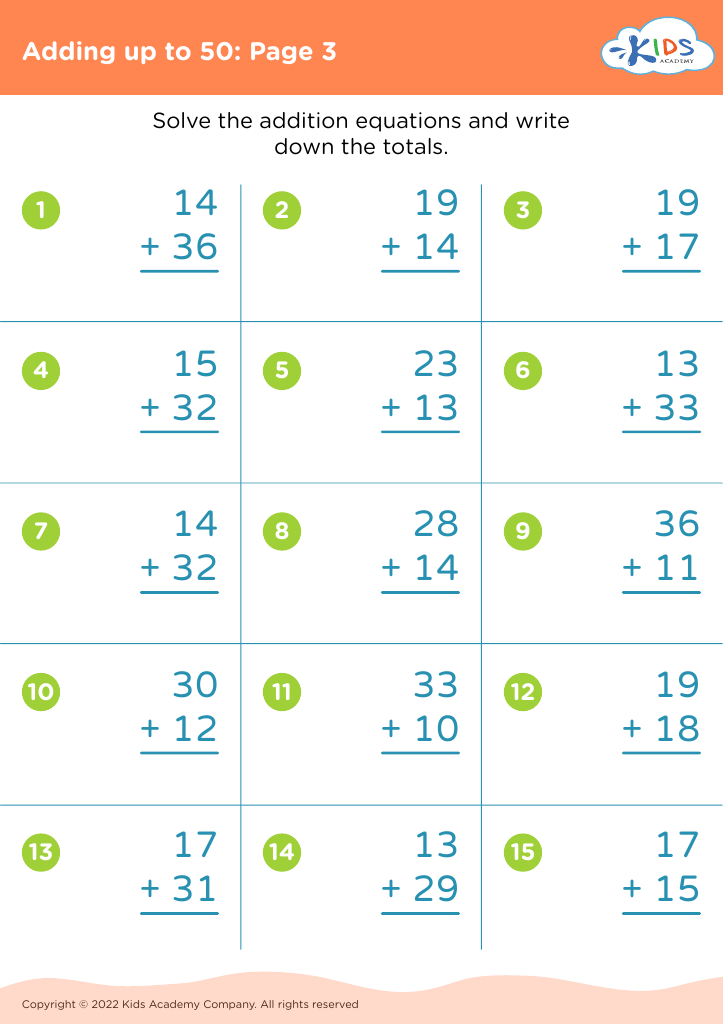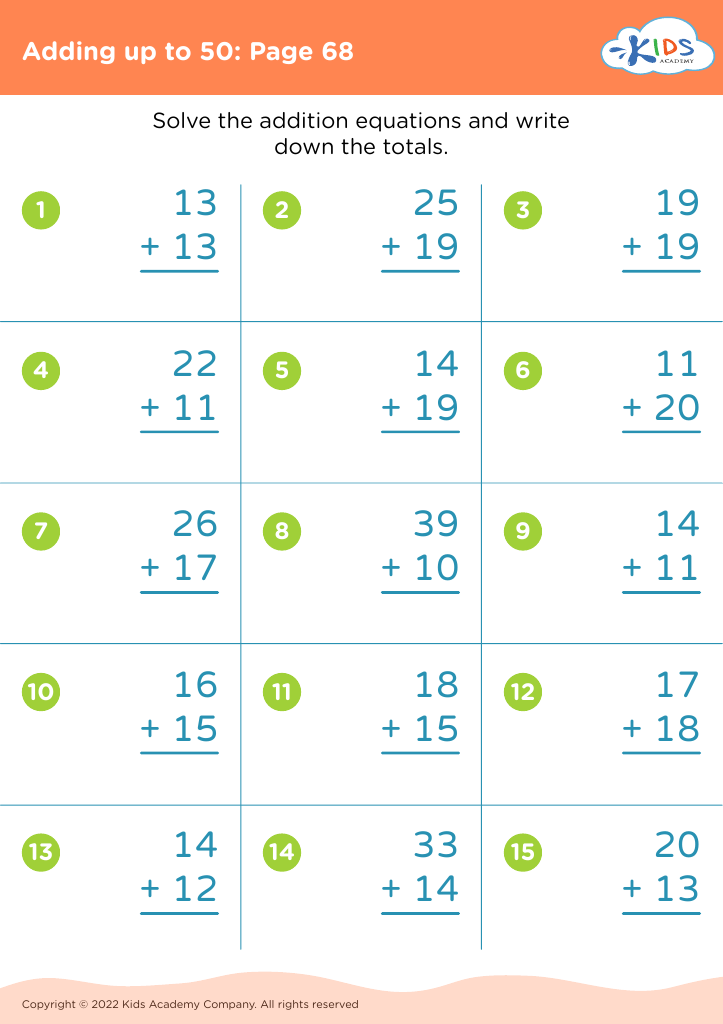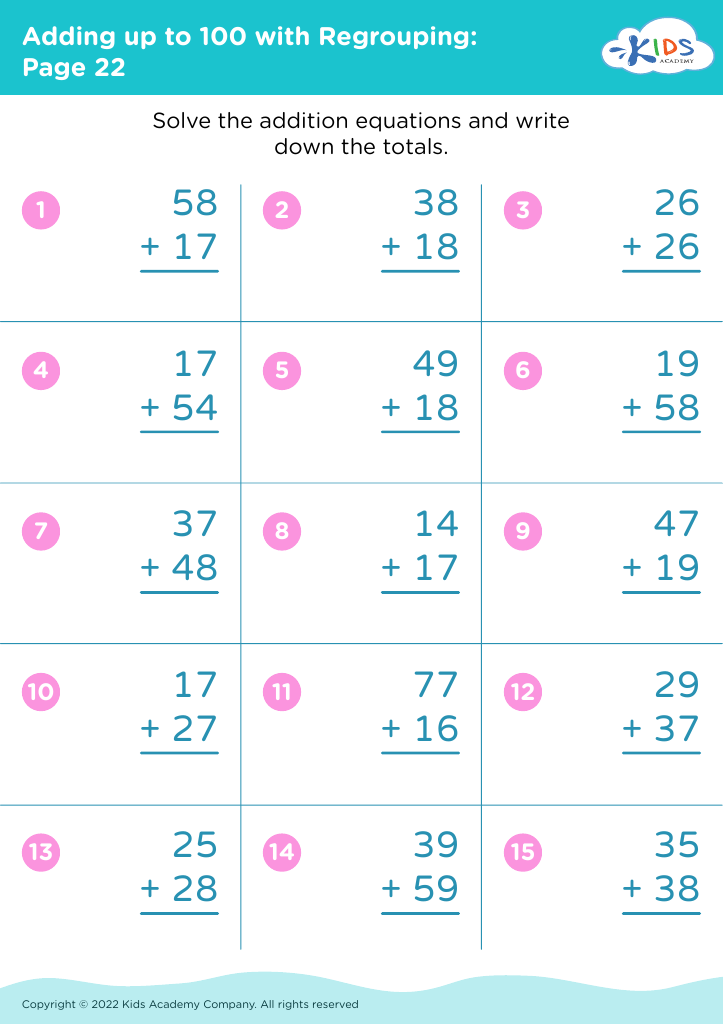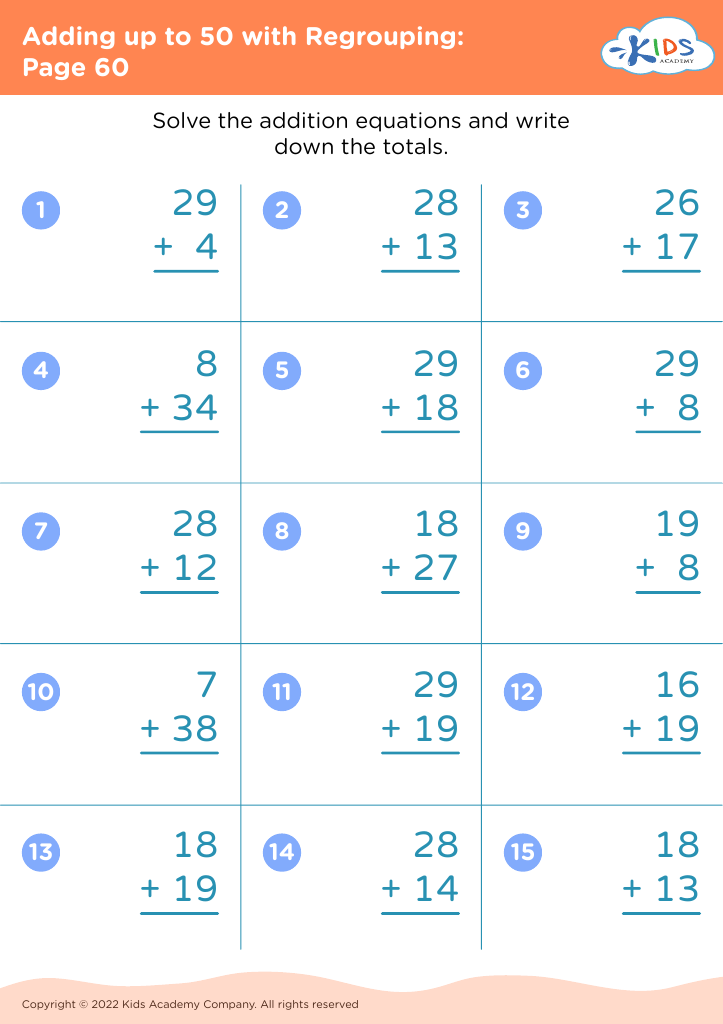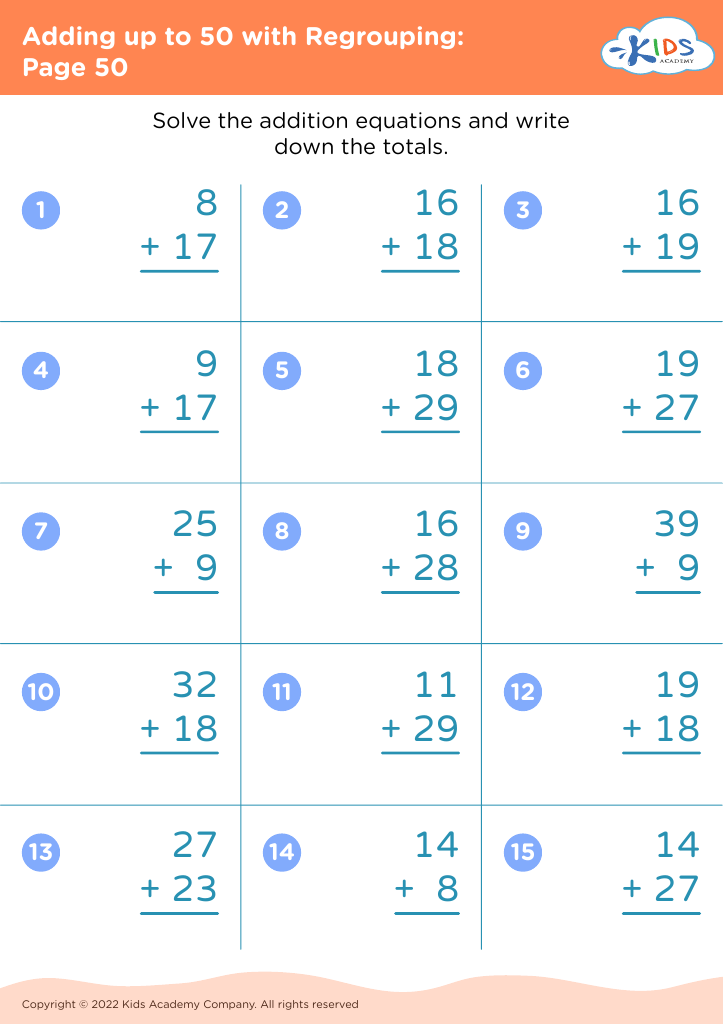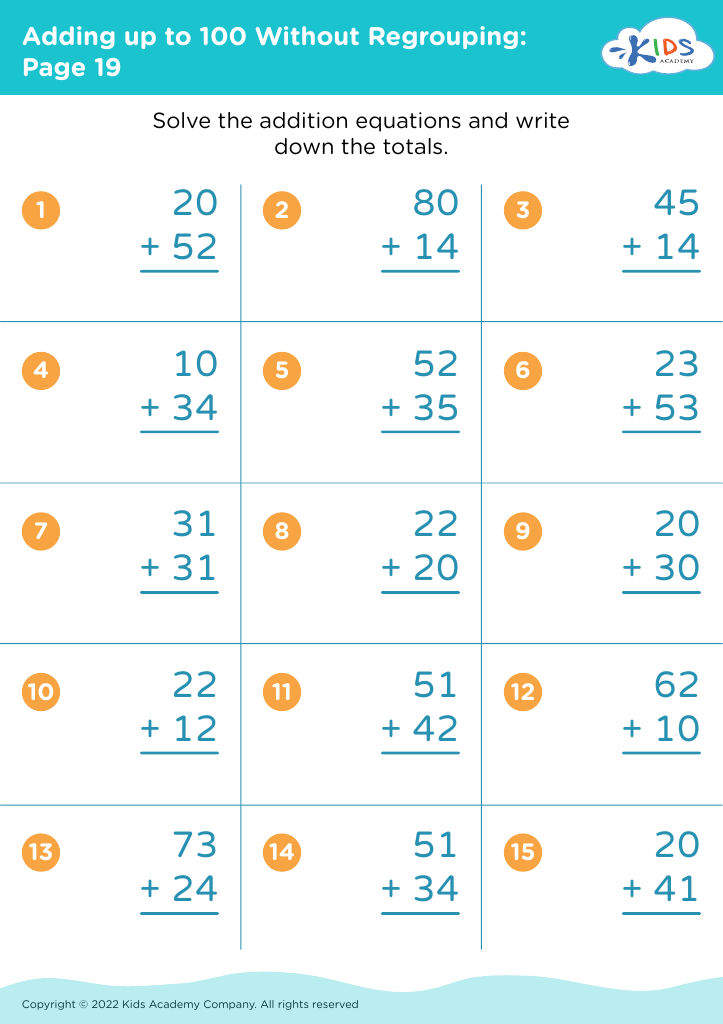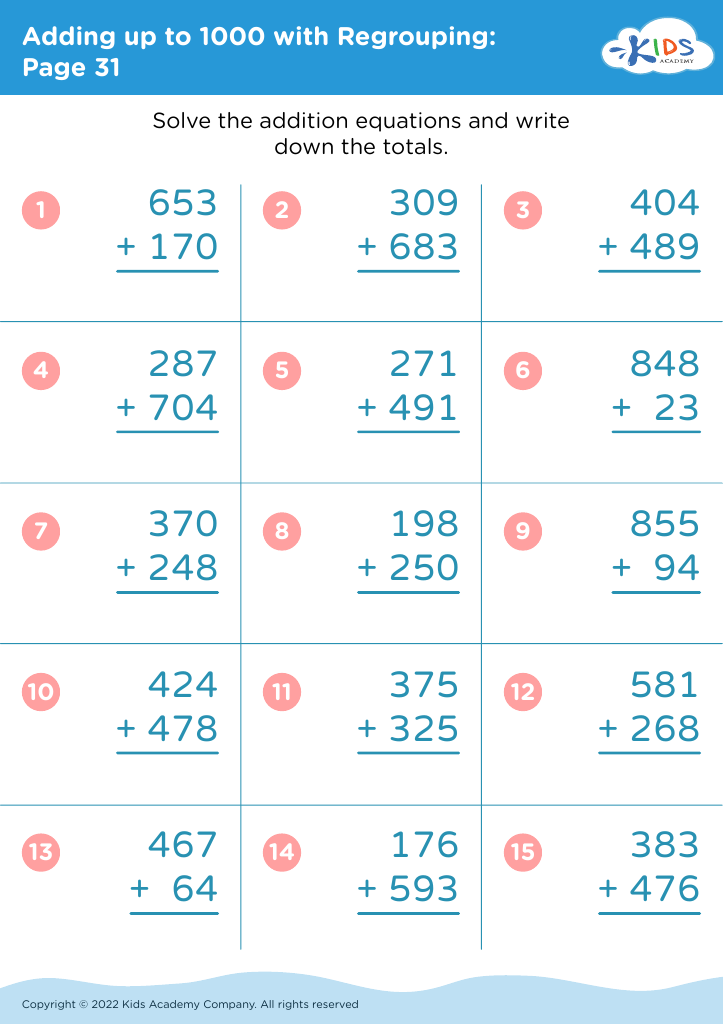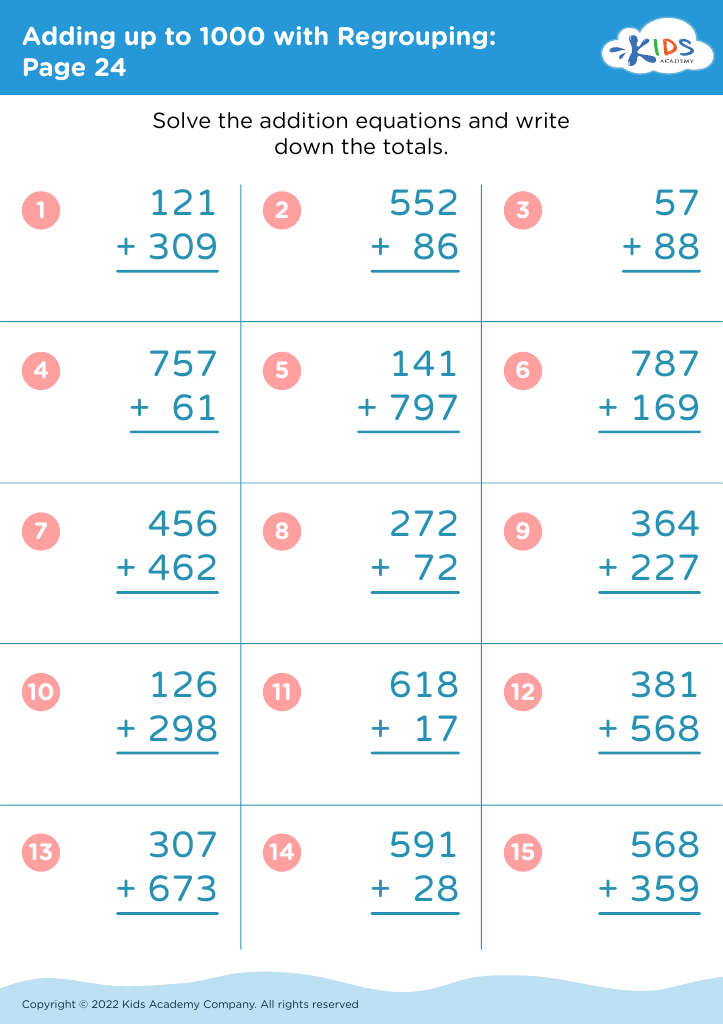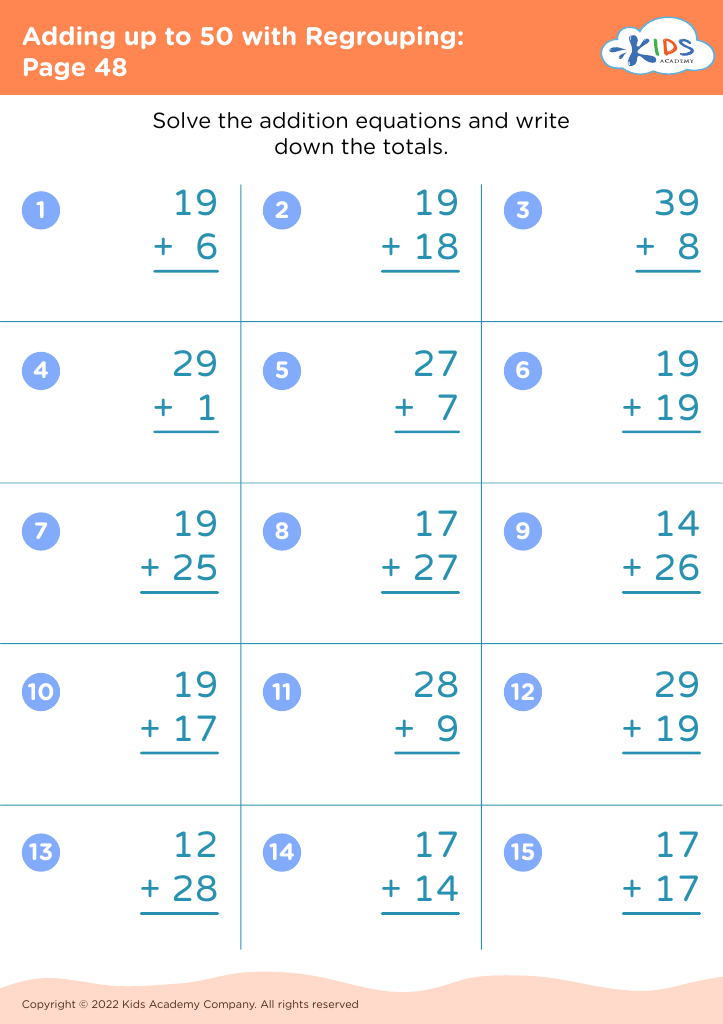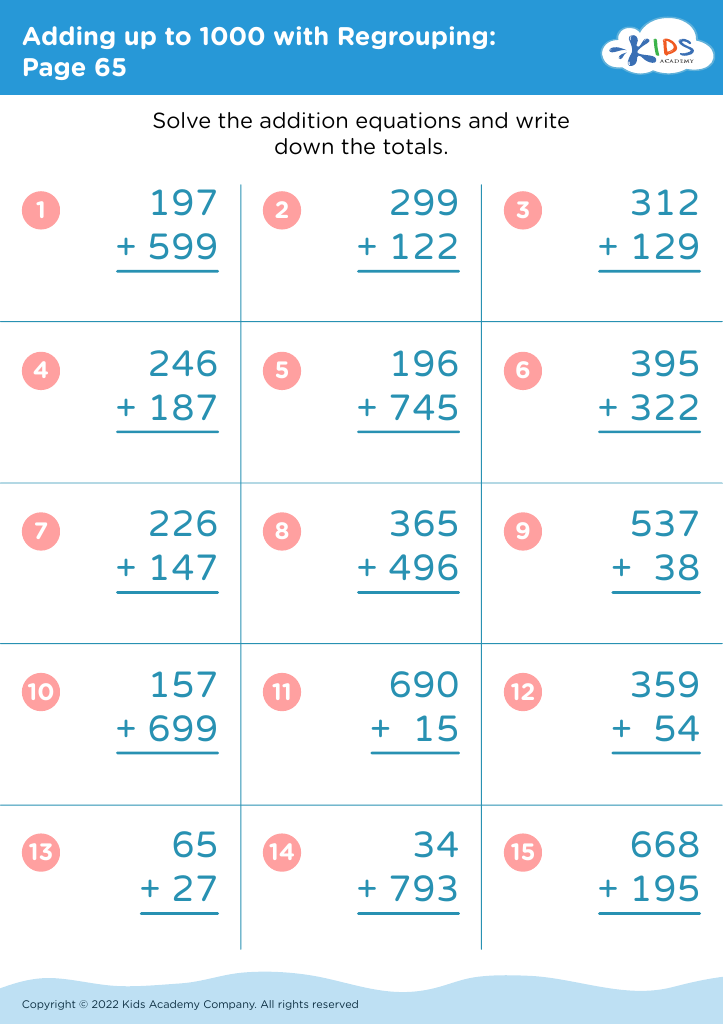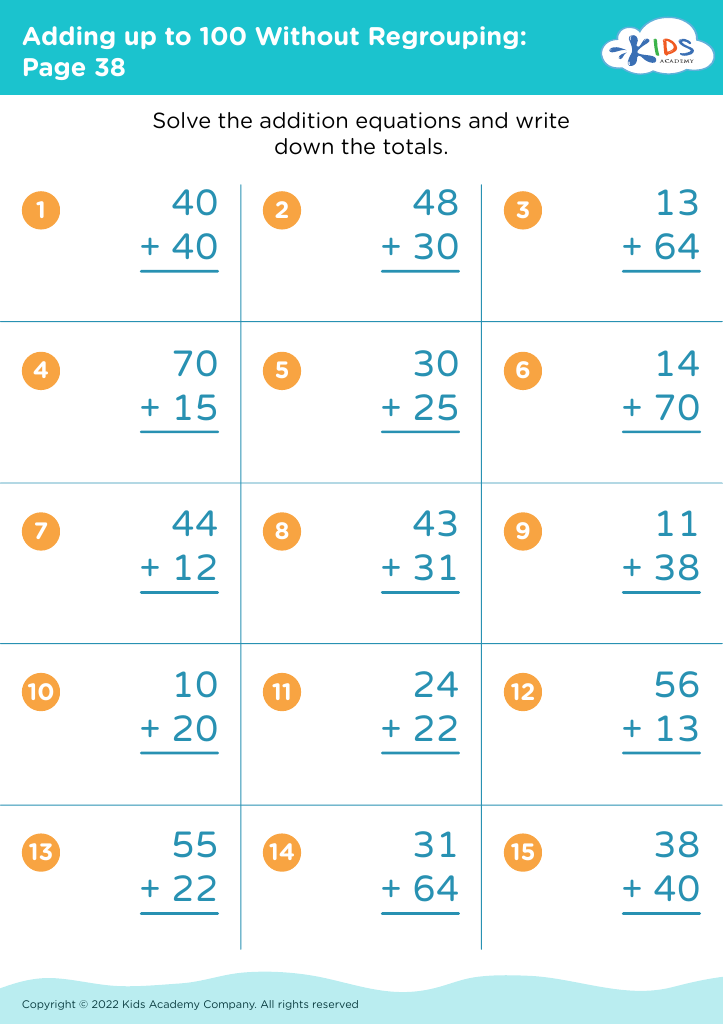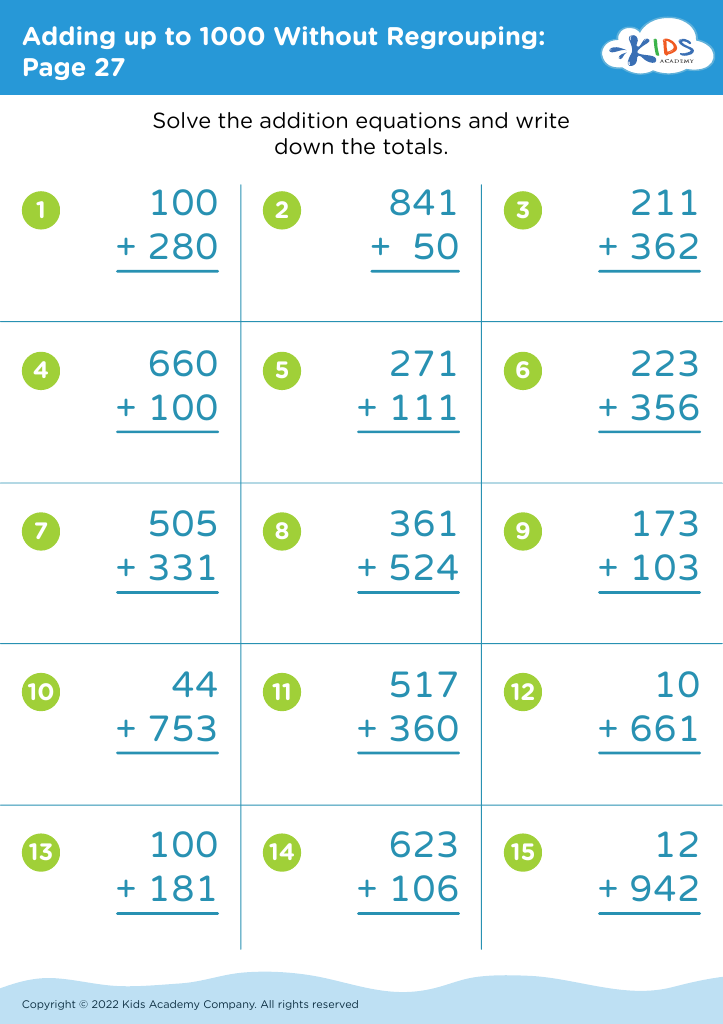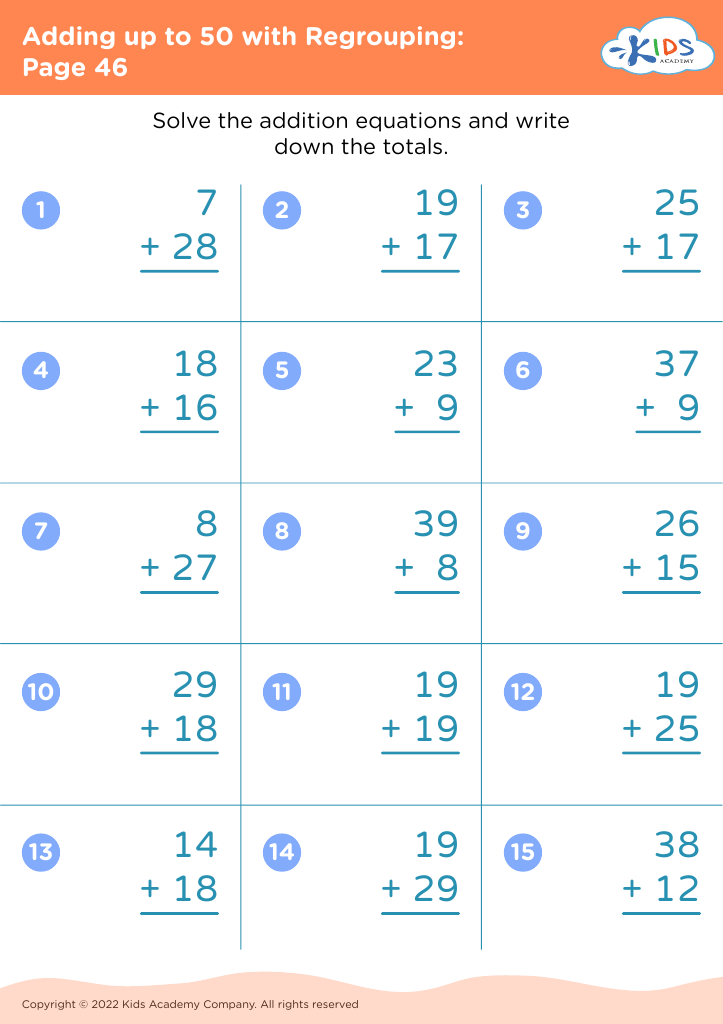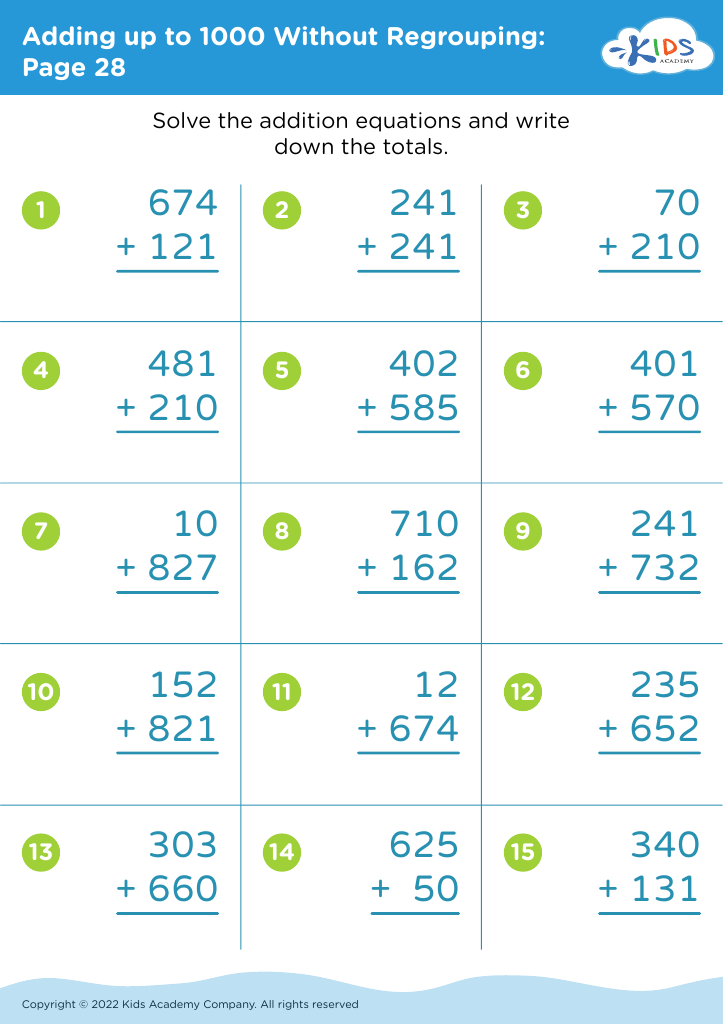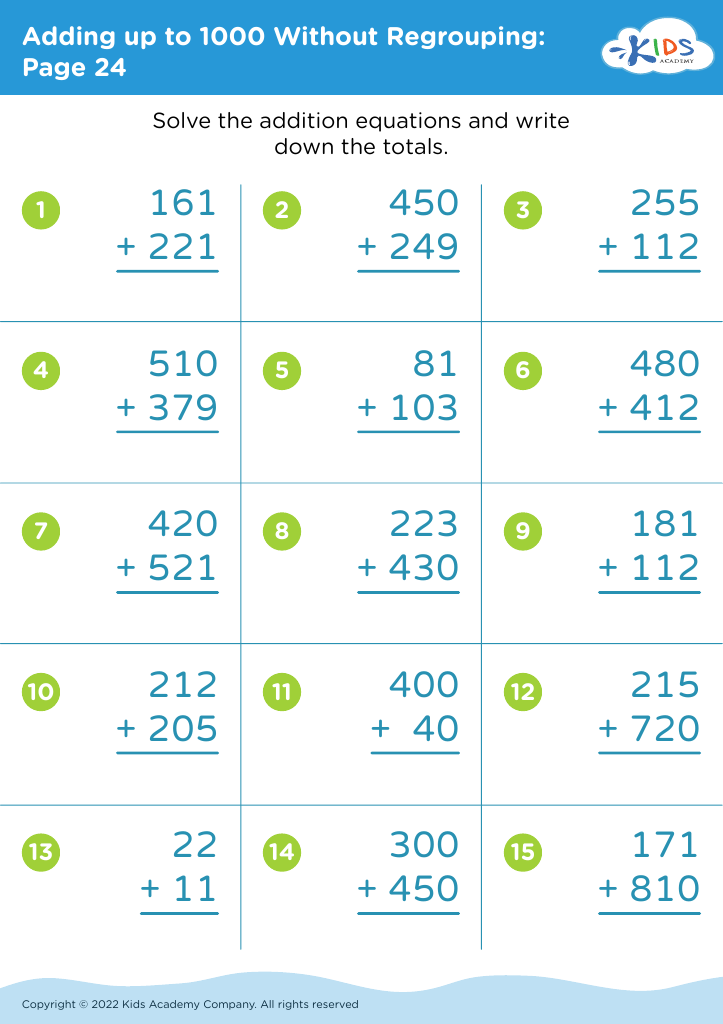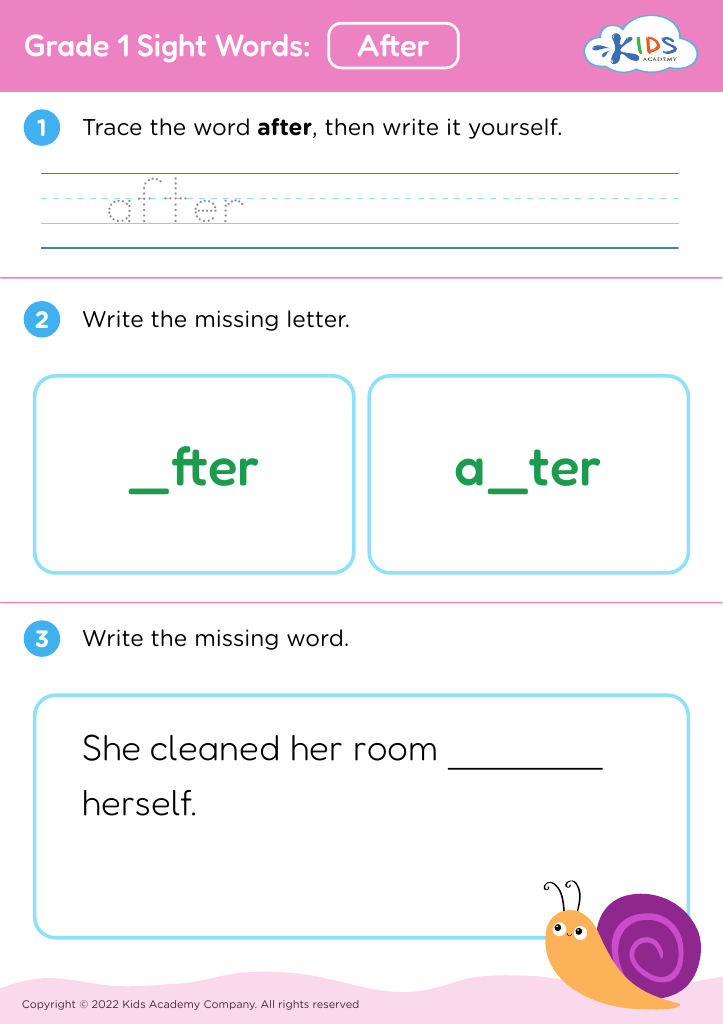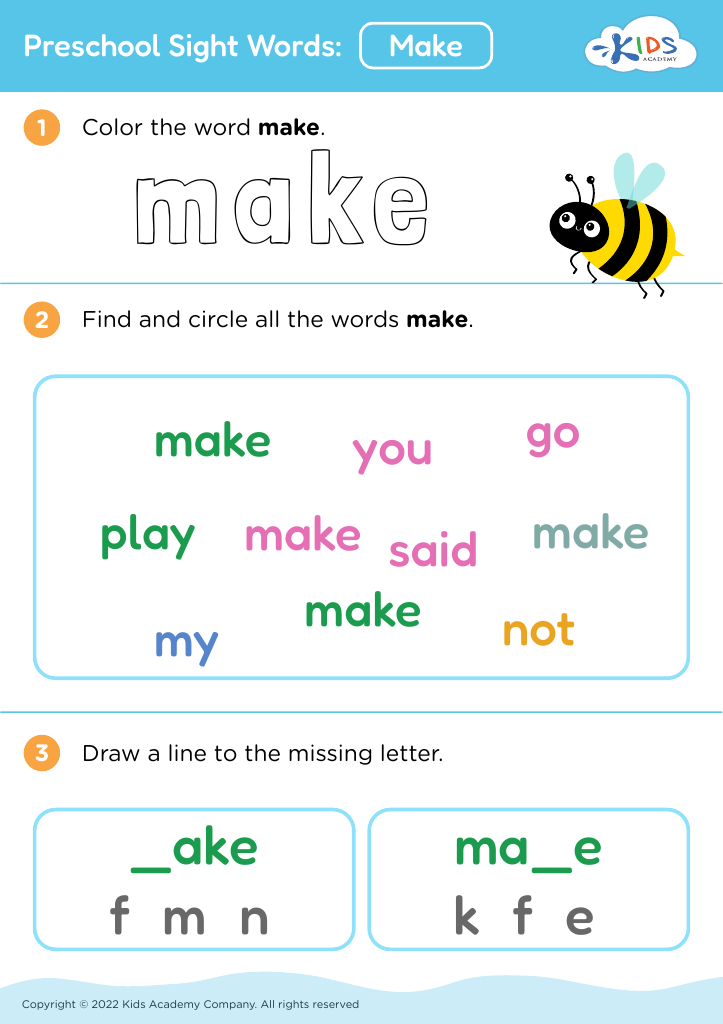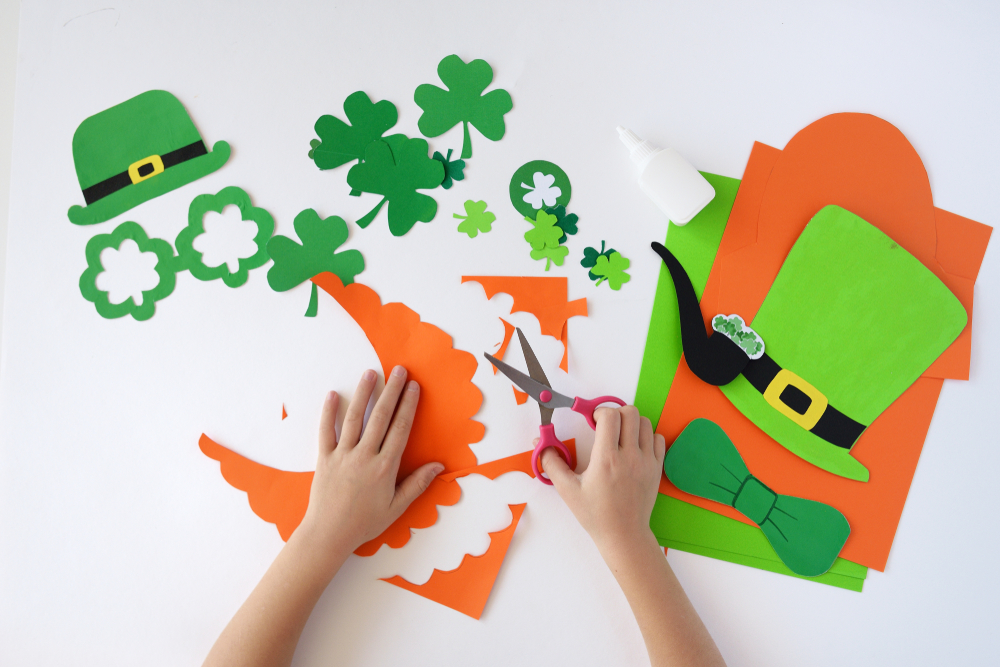Simplifying Fractions Worksheets for Ages 5-9
29 filtered results
-
From - To
Discover our engaging Simplifying Fractions Worksheets designed for children aged 5-9! These worksheets offer a fun and interactive way for young learners to grasp the concept of simplifying fractions. Each activity provides clear instructions and vibrant illustrations, making complex ideas accessible and enjoyable. Ideal for classroom settings or home practice, our worksheets help build foundational math skills while enhancing critical thinking. Whether your child is just starting to explore fractions or needs extra practice, our resources support their learning journey. Dive into the world of fractions today and watch your child gain confidence in their math abilities!
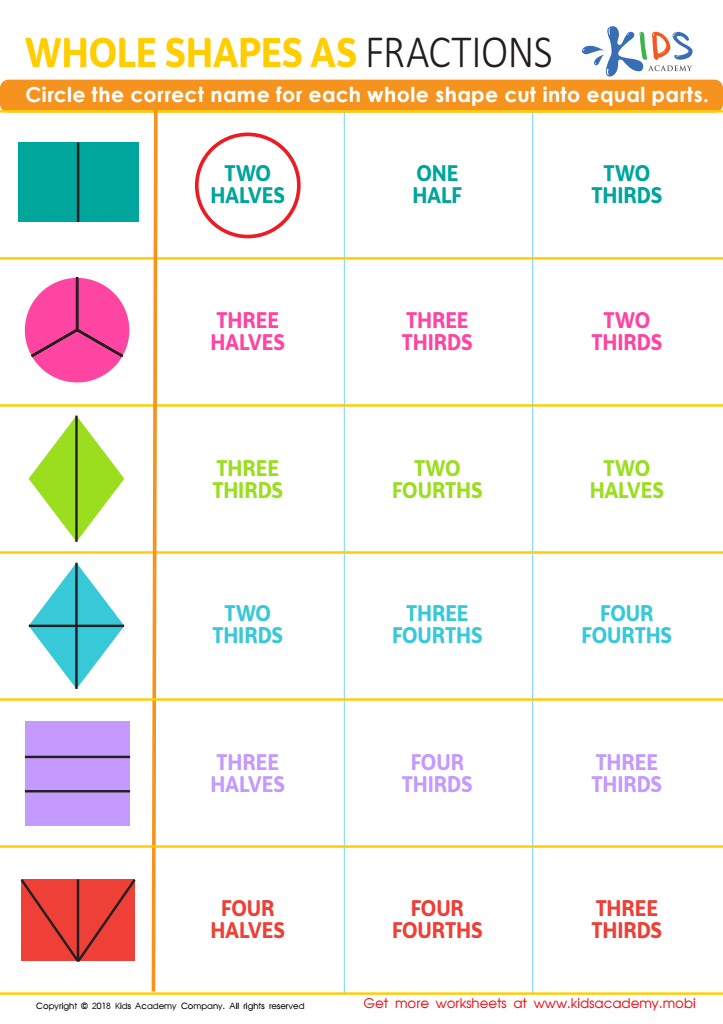

Whole Shapes as Fractions Worksheet
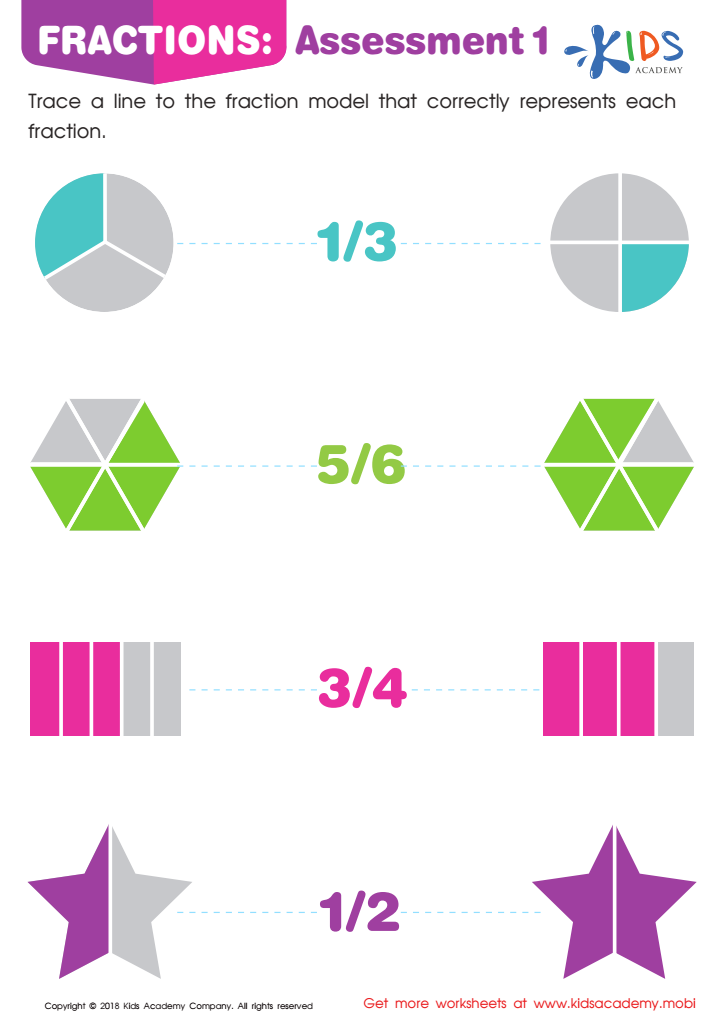

Fractions: Assessment 1 Worksheet
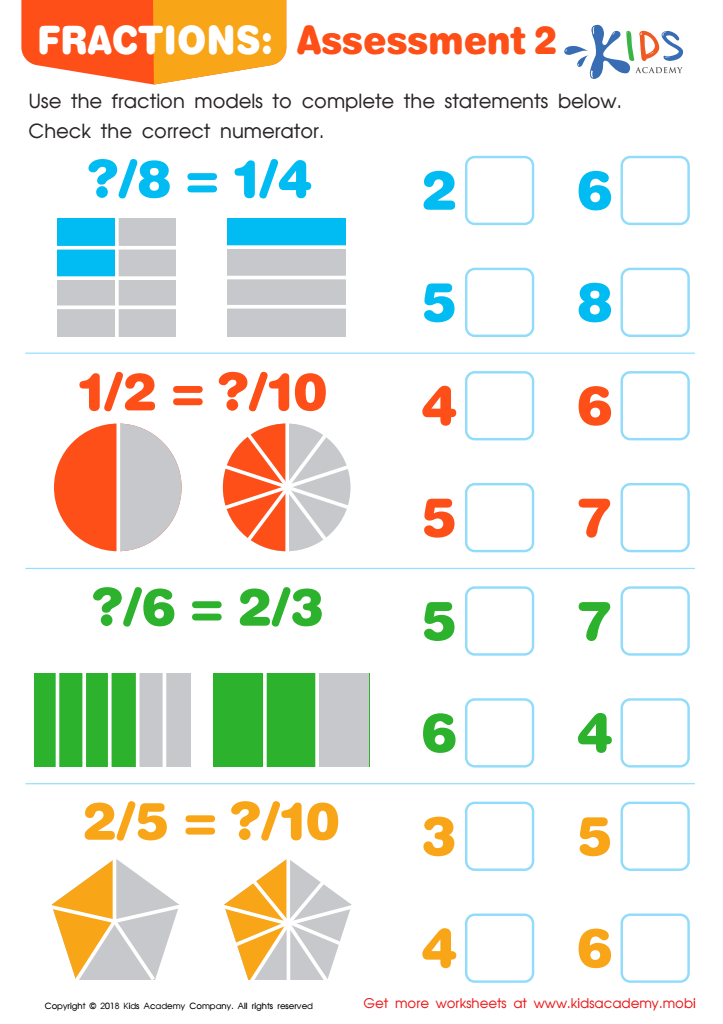

Fractions: Assessment 2 Worksheet
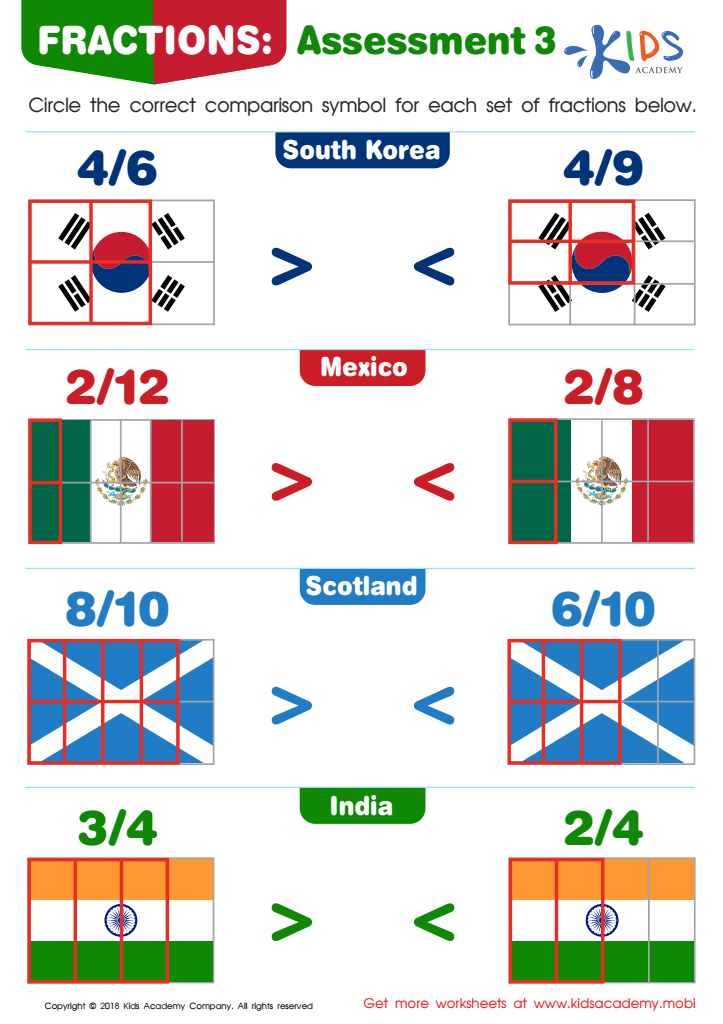

Fractions: Assessment 3 Worksheet
Teaching children ages 5-9 to simplify fractions is essential for their mathematical development and overall understanding of numbers. At this stage, children are developing foundational math skills, and simplifying fractions introduces important concepts about number relationships and equivalency. Understanding fractions is a building block for more advanced math topics, including ratios, proportions, and even basic algebra.
When children learn to simplify fractions, they also enhance their problem-solving abilities. This skill fosters critical thinking as they learn to recognize patterns and relationships in numbers. Additionally, simplifying fractions encourages a more intuitive grasp of division and the concept of "parts of a whole," which is pivotal in everyday life.
Parents and teachers play a crucial role in reinforcing these concepts. Engaging children in fun and practical exercises—like sharing pizzas or dividing candy—makes learning fractions relatable and enjoyable. By promoting this understanding, adults help children gain confidence in their math skills, leading to improved performance in school and a positive attitude towards math in general. Ultimately, nurturing these abilities cultivates a solid foundation for lifelong learning and analytical skills critical for future success.
 Assign to My Students
Assign to My Students
